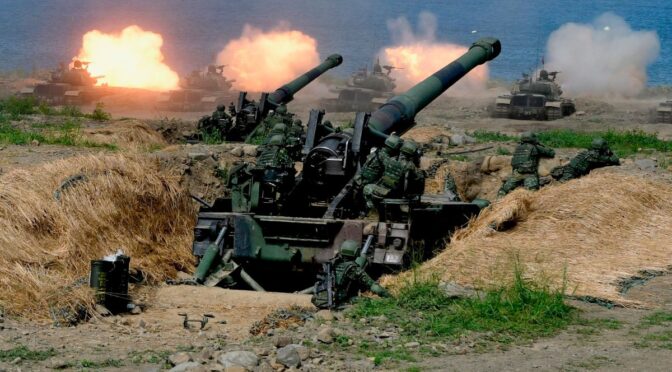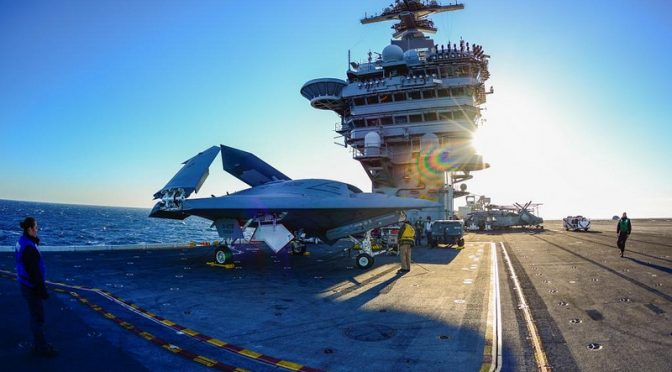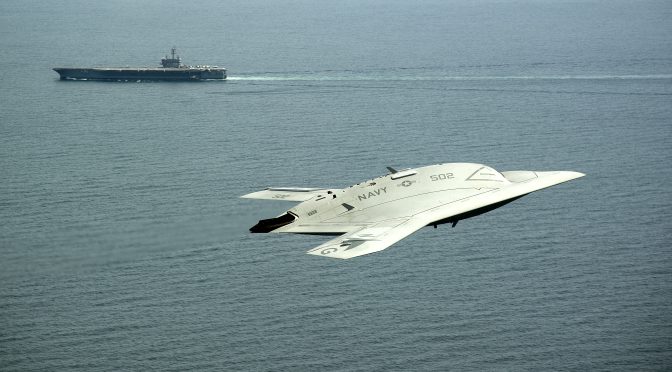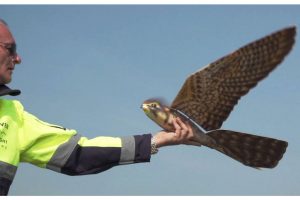By Mie Augier and Wayne Hughes
Introduction
Recently, senior decision makers and leaders, including the CNO, CMC, and SecNav, have expressed a belief in the centrality of military innovation and adaptation, and many commentators in think tanks and the press are promoting more military innovation for future readiness. Implicitly or explicitly, enthusiasms for innovation usually take one of the three following forms: emphasizing the nature of innovative thinking, the achievement of new innovations in military organizations, and establishing a culture of innovation.ii
These are overlapping issues. Recognizing their importance and talking about them is an essential beginning, because all three are needed, and they are intertwined. In this brief paper we intend to provide a discussion of, first, some aspects of the nature of innovation and why it is difficult; second, how successful organizations have innovated and adapted in the past; and third, the nature of thinking and action that undergirds innovation.iii
The Nature of Innovation
Doing things differently is difficult; but the heart of innovation is about first seeing things differently which is just as hard. Both involve making decisions under uncertainty and ambiguity, and embracing risk. There is a natural human instinct and inclination to want certainty about the future, but predicting a future is like “driving in the dark” as former Secretary of Navy Richard Danzig put it in 2011.iv If we base our decision-making on unrealistic assumptions about uncertainty, we are not likely to get things right. In addition, trying to base innovation on a predictable future can lead to endless debate because the discussions are unresolvable and will go on without end. Moreover, from the record of the past, the consensus of experts will be unreliable. N. N. Taleb in The Black Swan described the need to respond to unforeseeable events. P. E. Tetlock in Expert Political Judgment: How Good Is It? offered conclusive evidence that an expert’s power of prediction ten years in the future was “worse than that of a dart throwing monkey,” in other words, less reliable than a random choice.v
Regardless, battle-changing innovations do happen. Here are three ways to help us cope with, perhaps even embrace, an unpredictable future:
Thinking about alternative futures. Thinking about alternative futures is a powerful way of enabling decision-making under uncertainty pioneered by Herman Kahn, and put into productive use by Andrew Marshall in many of his Office of Net Assessment studies. The reward of exploring alternative futures is the chance to uncover and adopt a strategy, new technologies, and new tactics suitable for all or most of them. For example, our future with China may be collaboration, competition, confrontation, or different kinds and levels of conflict. This has many implications, including that it may be possible to design one fleet that imperfectly supports an adaptive maritime strategy to keep the peace and support our East Asia allies.vi
Looking at historical trends. In addition to thinking about possible futures, looking at our pasts and our history to identify trends can be a useful way to navigate the seas of uncertainty. For example, the approach in Fleet Tactics and Naval Operationsvii is to identify trends and constants in naval history. Because trends are likely to continue, they can guide the development of new tactics and technologies. For example, the trend toward smaller, faster, and more efficient computers and their growing applications is one that has a profound influence on information warfare. “COTS” (commercial off-the-shelf) technologies have had the biggest effect on computer technology. The same kind of influence and eventual dominance of commercially developed control systems is now affecting the growing power and flexibility of UAVs.
Studying successful innovations from the past. Understanding the evolutionary processes enabling innovation can be useful indicators of what might work in the future, and how implementing innovation has proceeded, usually along a winding road. While it is tempting to look to business for learning how to innovate, there is much to learn from past innovation in many military organizations’ histories, indicating also that non-linear forward progress is the norm for effecting innovations.viii For example, aircraft carriers were developed before their coming dominance at sea was fully appreciated. Tanks had a checkered history: The British invented them; the French built high quality ones in large numbers; but the Germans exploited their tactical advantages with a new operational application, the Blitzkrieg. Vertical lift aircraft were notably inferior to propeller and jet-propelled aircraft, yet they revolutionized air and ground warfare.ix
Note that great achievements at the combat level usually require both new technologies and new tactics, which are like two sides of a coin and often best enabled if guided by new concepts and new ways of thinking. Leaders must learn how to marry the quite different personalities of technologists and seagoing officers to accomplish big advancements.
Achieving Innovation in Military Organizations
Most innovations take place in organizations, or need organizations to generate new inventions. Organizations can help and encourage, but sometimes stifle, innovation. As organizations age and grow (and most military organizations are both quite large and old) they first develop routines, rules, and structures to improve efficiencies and get things done, but then the rules and bureaucratic processes often take a life of their own and multiply, resulting in organizational calcification.
As Secretary Gates perceptively noted in his discussion of why our bureaucracies often fail: “[L]eaders … often encounter entrenched cultures that make real change difficult, as well as lower-level organizations resistant to guidance from the top, determined to preserve their piece of the cake and their status. Trimming organizational deadwood can be as challenging in the business world as in public institutions. It is a rare soul who has not been frustrated and maddened by multiple business bureaucracies—not to mention disastrous business decisions that cost jobs and create economic turmoil and heartache.”x
Commercial organizations and think tanks offer examples of innovative research (RAND in the 1950s and the early Bell Labs come to mind), and they can provide important inputs to military organizations and innovations. We can undoubtedly learn from how they organized and facilitated innovative research. But military organizations are not think tanks, whose product is thought and writing. Military organizations must also plan and act. Military organizations are different from commercial organizations, too. Both have an important competitive/interactive aspect. Businesses gain and maintain competitive advantages by making and selling competitive products. Military organizations need to gain and maintain competitive advantages too, but they are designed to destroy an enemy’s will to fight and his means of war. Despite the differences, there are things we can learn from studying the organizational mechanisms that have successfully supported innovation in different contexts, such as reducing administrative overhead, decentralizing the decision-making, and trying to avoid empowering middle managers with too many layers of approval. An example of the relevance of this approach in a military organization was Commandant and General Al Gray’s transformation of the USMC with a maneuver warfare way of thinking.xi He worked toward freeing up the people with ideas and protecting them from paperwork and bureaucracy. We also note that Secretary Mattis’ emphasis on combat readiness is intended to free people from unnecessary training and administration.xii
Organizations have adapted to changes in warfare in the past, as we suggested above with aircraft carriers, precision-guided weapons, and the atomic bomb. These innovations were not merely passive responses to change: many proactively created changes in warfare. Speaking about uncertainty and risk, someone once said, “If you can predict the future then I can’t change it.” Interestingly, many of the most important innovations helped shape a future by imposing change on the enemy, exploiting enemy weaknesses, and building on our strengths.xiii
Successful past innovations were often focused geographically with a specific enemy in mind. For example, the development of Marine amphibious assault doctrine and the vessels to achieve it grew out of Major Earl “Pete” Ellis’ study of the Pacific Islands and atolls the Marines knew they would have to seize in the event of war with Japan. The Israeli Navy swiftly developed small missile combatants armed with Gabriel missiles after the sinking (in 1967) of the destroyer Eilat with ASCMs fired from small, Soviet-built, Egyptian-operated, Osa and Komar missile boats. In just six years from a cold start, the Israeli Navy obtained the ships and trained crews to defeat the Egyptian and Syrian navies in the 1973 War. It was a great shock to the enemy and changed the nature of naval war in coastal waters.
The Importance of Nurturing Innovative Thinkers
Not everyone in the organization should be an innovative thinker. Many must excel in planning with existing capabilities and fighting. Most people prefer to do what they know they do best, and they can often easily measure and see the results of their work. Innovative thinking requires experimenting with what one does not know best and sometimes not at all. The fruits of such work are often more distant and uncertain. Organizations, to be adaptive, need both exploration with new ideas and ways of thinking (leading to new capabilities in the long run) and exploitation of existing ones. A problem arises when planners do not appreciate the necessary contribution of a few precious disruptive and innovative thinkers.xiv But if innovators alone dominate, then there is no one to plan the development, implementation, and tactics to exploit an innovation, often in ways quite different from the original intent.xv Leaders must know how to recognize, nurture, and listen to innovative thinkers and suppress bureaucratic impediments to “thinking differently.”
How do our organizations attract and make room for them, and cultivate innovators in organizations to help the constructive application of disruptive thinking? By attracting and fostering the careers of the future Arleigh Burkes, Al Grays, and Hyman Rickovers who have bold ideas. A few relevant aspects:
Recognizing and making room for disruptive talent. There is a great need to be open to creative individuals, those with ideas that may challenge the system and managers at times. As Colonel John Boyd noted in his testimony on military transformation: “First, we need to understand that throughout history the difference between brilliantly performing armies and mediocre ones has always depended on a small handful of combat leaders. Naturally, the military that manages to nurture a tiny handful of brilliant, innovative officers .. achieves great results… On the other hand, a military that suppresses said brilliant and unconventional young officers among them, who I might add tend to make life uncomfortable for seniors, is forced to grind out rigid, predictable battles with much blood and mountains of material.”xvi
Creating unusual mixing. One can help fight against the organizational bureaucratic inertia by mixing teams of people in unconventional ways. Doing so demands creative leadership because there are centripetal forces at work. People gravitate toward those who are most like themselves, but we often learn more by interacting with those unlike ourselves. In academic and military educational institutions, leaders can take proactive roles in “mixing” people who may otherwise gravitate toward the institutional and intellectual comfort of those with the same beliefs.
The concepts and words we use matter. Successful military slogans like “distributed lethality” applied by the Surface Navy today has shown the way to innovative development in an organization that leads to unified technological and tactical development. “Attack effectively first” is another simple slogan of naval warfare with many applications that have been verified by past success in battle. The slogan has many nuanced implications and is a clue to how to win at sea today. It can guide technological, tactical, and organizational development in the future. The Revolution in Military Affairs is another identifier of technologies and tactics that had profound effects on all modern warfare and a concept that was intended to also emphasize the underlying intellectual and organizational changes needed, not just the technology.xvii
Achieving Innovation in the Navy
Innovation cannot be reduced to a check-off list, a blueprint, or a manual to guide creativity. Military doctrine manuals provide for unified strategic planning and tactical cooperation. That is different from innovation. Contrast Edison’s development of the electric light bulb with the multifaceted development of the Polaris submarine and missile under the leadership of CNO Arleigh Burke, who had the inspired idea, the actions by Red Raborn in developing the missile, and Hyman Rickover in developing the submarine. Contrast both with the strange history of the development the tank in 1917 and its several applications to armored warfare. There is no one single process to guide success.
However, there are things naval leaders can do to foster innovative thinking and make their organizations more prepared to adopt new tactics and technology, including:
Guard against a no-defect mentality and fear of failure. The only way never to make a mistake is to never make a decision, in other words to do nothing perfectly. Innovative thinking will never be right all the time, so there has to be a system that encourages variations in ideas in order to swiftly accept, adopt, and assimilate the good variations.xviii Ironically, avoiding failures can lead to loss of opportunities to learn from failures and evolve. The advancement of naval aviation in the 1920s and 1930s is a case study in learning from false starts and failures while rapidly progressing to readiness for World War II. Senior leaders must also actively protect disruptive thinkers.
Have organizational structures in place to recognize innovative thinking that doesn’t fit the mold of preconception. The common mistake is preparing to fight the last war. Instead when a promising advancement is discovered, create shortcuts under a sense of urgency to get around the bureaucratic system. The early success of Navy Special Projects offices in the 1950s illustrates this, and so does the empowerment of Rear Admiral Wayne Meyer to develop the Aegis combat system by the Surface Navy leadership of Vice Admiral James Doyle.
Emphasize that the most important characteristic to foster innovation is people. Advancement comes not from processes; or disciplinary lenses, or the “how to” manuals, or even advances in technology. The most important element in organizations and in warfare is the human element. As former Marine Corps Commandant General Robert Barrow noted, “In any institution or undertaking, the importance of people transcends all else.”xix Marine Combat University President General Bowers also noted (in his discussion of Wilson and Barrow), “You can get everything else wrong, but if you get the people right, you will be all right. Whereas you can get everything else right, but if you get the people wrong, you are going to be in trouble.”xx Leaders must proactively constrain middle managers who maintain the status quo with a “spreadsheet” mentality.
Recognize and reward the best leadership styles. In addition to realizing that the most important element is the people chosen, we need leaders who stick their necks out for those willing to experiment and do things differently and provide top cover for the people who are implementing the new ideas, technologies, and tactics. In particular, leaders can help on issues such as:
Experimentation. Experiment at sea with prototypes and first generation designs in the full expectation that second and third generation designs must be built to correct the early mistakes and smooth out shortcomings. Experiments can also lead to innovative ways in how organizations think and fight. Marine Generals Al Gray and Charles Krulak led many experiments in the early days of maneuver warfare before the concept was fully developed and adopted, experiments that were both intellectual, organizational, and operational.xxi
Exploiting the creativity of youth by “getting out of the way.” Here are wise words regarding cyberwar from a Navy lieutenant: “The most talented graduate students at the best U. S. computer science and engineering schools are said to be those who leave before graduation in order to pursue venture capital or other commercial opportunities . . . [to pursue excellence in the Navy] administratively and organizationally reduce the various forms of friction that would inhibit those [young] individuals and teams within their cyber forces from innovating, developing, and deploying capabilities faster than the adversary force.”xxii Talented youth will be prominent in cyber war evolution, just as they rose to prominence in computer technology, as youthful combat leaders like William B. Cushing and J. E. B. Stuart in wartime, or as youthful classical music composers like W. A. Mozart and Felix Mendelssohn.
Building an organizational culture to support innovation and reward risk takers. It goes without saying there are limits and achieving a balance is one of the most challenging skills of leadership. Nevertheless, it is a lot easier to suppress innovation and risk-taking than to grow it. Leaders must be particular attentive to the handful of people who are willing to take risks and protect the intelligent risk-takers from thoughtless suppression because they are willing to dare.
Broadening peoples’ minds. Foster curiosity in the midst of good discipline. Cultivating open minds is a key responsibility of our military educational institutions. Retired VADM Patricia Tracey in an interview noted last year, while reflecting on her exceptional career, extolled her time in graduate school: “[E]ducation is about how does it all fit together? . . . How might you think about doing things differently? . . . I say just that time out in a thought-provoking environment to consolidate everything that you’ve experienced and draw meaning from it and expectations for what’s next . . . is invaluable to somebody who’s at some point going to have to deal in massive uncertainty.”xxiii The University of Chicago under Robert Hutchins actively promoted broad reading that helped broaden civilian minds. Military innovative thinkers such as General Gray and Secretary Mattis are famously avid (and broad) readers. Mattis said in 2003 when asked about the importance of reading, that while reading doesn’t give you all the answers, it lights up the path ahead and enables us to understand and learn from the past.xxiv
Conclusion
Secretary Danzig’s metaphor of “driving in the dark” is very relevant to the road to improve innovation amidst uncertainty, and it will not be a straight highway. Yet, notwithstanding the difficult nature of innovation and the inhibiting organizational processes that often suppress it, past successes suggest that we can indeed nurture innovators and grow innovations in the U.S. Navy. This will unavoidably accompanied by bruising the status quo ways of thinking. We have not discussed every aspect of success. Further dimensions to explore include how our educational institutions must help build more innovative and interdisciplinary thinking, and examining past attempts to innovate, including the failures, with an eye for their strategic, organizational, and tactical implications.
Dr. Mie Augier is associate professor at the Graduate School of Business and Public Policy at the Naval Postgraduate School. She is interested in strategy, organizations, innovation, leadership, and how to educate strategic and innovative thinkers.
Captain Wayne Hughes, USN (Ret.) served thirty years on active duty, commanding a minesweeper, a destroyer, and a large training command. In retirement has taught, done research, and served as a Dean at the Naval Postgraduate School for over thirty years. He is a distinguished author of the U.S. Naval Institute.
Footnotes
i We dedicate this paper to Andrew W. Marshall, who continues to inspire us and who has tirelessly worked to improve innovation and innovative thinking in our organizations. We are grateful for the comments from Jim March, BGen William Bowers, VADM Ronald Route, and Andy Marshall on an earlier draft. Any remaining errors were produced without help.
ii We should also mention that while we draw mostly on Navy and USMC examples, other services have also begun important discussions on the topic, see for example: https://www.army.mil/article/173386/making_innovation_happen
iii Although our paper is largely conceptual in order to provide insights into the dynamics making innovation difficult but possible, we also include some practical examples / anecdotes on the basis of past success. Obviously, more research and reflections on the topic is needed, but we hope to indicate at least part of foundation and some fruitful lines along which progress can be made.
iv See, R. Danzig : “Driving in the Dark”, available here: https://www.cnas.org/publications/reports/driving-in-the-dark-ten-propositions-about-prediction-and-national-security
v Military leaders have also made similar points. Robert Gates for instance noted to West Point cadets: “When it comes to predicting the nature and location of our next military engagements, since Vietnam, our record has been perfect. We have never once gotten it right, from the Mayaguez to Grenada, Panama, Somalia, the Balkans, Haiti, Kuwait, Iraq, and more — we had no idea a year before any of these missions that we would be so engaged.” Secretary Jim Mattis (then General) also noted in a testimony to the arms services committee in 2011: “I think, as we look toward the future, I have been a horrible prophet. I have never fought anywhere I expected to in all my years.” These (and other) examples of our prediction capabilities noted here: http://foreignpolicy.com/2012/10/16/100-right-0-of-the-time/
vi Forces for such a strategy must demonstrate that we can deny China’s commerce and sink the PLA’s warships in its own home waters with a capability that takes the offensive in China’s Seas with highly distributable forces.
vii Naval Institute Press, April 2018
viii In particular given that the organizations ability to experiment and adapt to new innovations may be quite different in business and military organizations. This is not to say that we don’t think there is plenty to be learned from business organizations – for example, minimizing red tape, bureaucratic chain reactions and paperwork is clearly something business is better at. But when it comes to understanding how to implement innovations, as well as understanding the dynamics of the larger strategic environment and the adoption of innovations, studying military examples from the past might provide useful information (see, for instance, Williamson Murray and Allan Millet’s book on “Military Innovation in the Interwar Period”).
ix Other examples include: Nuclear ICBM’s changed all aspects of warfare. Cruise Missiles are teaming with and sometimes replacing strike aircraft because of their great range and endurance. UAV’s and Autonomous Aerial Vehicles combined with cyber warfare technologies are changing the nature of warfare as we write.
x R. Gates (2016): A Passion for Leadership, p. 5.
xi A discussion of the USMC maneuver way of thinking and its history is available here: http://grc-usmcu.libguides.com/c.php?g=756767&p=5426039.
xii https://www.militarytimes.com/news/your-military/2017/07/25/mattis-get-unnecessary-training-off-warfighters-backs/
xiii This also implies that we must spend a great deal of time trying to understand how our opponents think and how their organizations work, in addition to observing what they do.
xiv Organization scholar James March has long warned that this is a typical ‘competency trap’ of organizations and that we should pay particular attention to trying to nurture and nudge those willing to explore (see J. March, “Exploration and Exploitation in organizational learning”, Organization Science, 1991).
xv Designer of Predator, Abraham Karem, noted that his drones were built for the cold war, but its various employments has expanded seemingly without limit. https://www.airspacemag.com/flight-today/the-man-who-invented-the-predator-3970502/
xvi As Colonel John Boyd noted in his testimony on military transformation: “First, we need to understand that throughout history the difference between brilliantly performing armies and mediocre ones has always depended on a small handful of combat leaders. Naturally, the military that managers nurture a tiny handful of brilliant, innovative officers combat command achieves great results. … On the other hand, a military that suppresses said brilliant and unconventional young officers among them, who I might add tend to make life uncomfortable for seniors, is forced to grind out rigid, predictable battles with much blood and mountains of material.” The testimony available here: https://www.c-span.org/video/?17753-1/us-military-reform-oper-desert-storm
xvii Another example is the maneuver warfare of ideas, for years debated and discussed among Marines including writing (in a series of Gazette articles), to help clarify important dimensions of the concepts and ideas.
xviii As recognized for instance in the USMC Commandant’s call for innovative and disruptive thinkers: https://www.marinecorpstimes.com/news/your-marine-corps/2016/03/04/commandant-looks-to-disruptive-thinkers-to-fix-corps-problems/
xix As quoted in “Commandants of the Marine Corps”, edited by Allan Millet and Jack Shulinson, US Naval Institute Press, 2004, p. 456.
xx See BGen Bowers lecture on USMC commandants Wilson and Barrow and the reforms they led: https://www.youtube.com/watch?v=aJZCBg_SDLY
xxi A panel discussion of the history and some relevant aspects of maneuver thinking is available here: https://www.youtube.com/watch?v=RL4__NVYByw
xxii LT. T. B. Meadors (USN), First Gain the Victory: Six Strategic Considerations for Naval Cyber Forces, 2017, prepared for and disseminated by VADM Jan Tighe, USN, Deputy CNO for Information Warfare and Director of Naval Intelligence, p. 7.
xxiii Military Operations Research, V22, N1, 2017; page 75.
xxiv http://www.strifeblog.org/2013/05/07/with-rifle-and-bibliography-general-mattis-on-professional-reading/. A great discussion of the importance of broad reading in the military profession in general is P. v. Riper (2006): “The Relevance of History to the Military Profession: An American Marine’s View”. In W. Murray & H. Sinnrich (eds): The Past as Prologue. Cambridge: Cambridge University Press.
Featured Image: The X-47B on the deck of the USS Theodore Roosevelt (CVN-71) on Nov. 10, 2013. US Navy Photo






